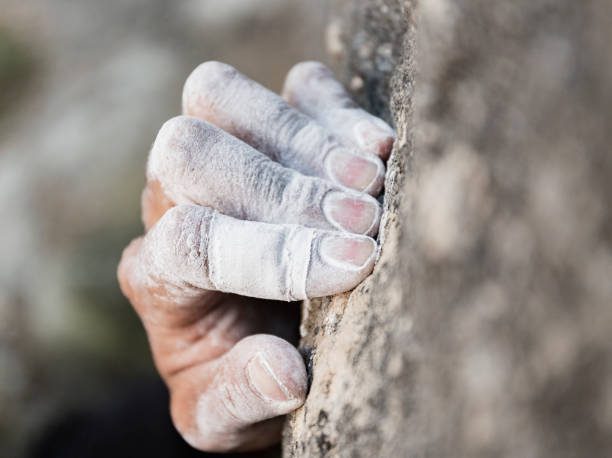Hey Sport Climbers, Bring a Brush and Use It
Here are a few important reasons why sport climbers should always carry a brush

Sport climbers have something they could learn from boulderers – brushing culture. Walk around the boulders outside or at the gym and you’ll quickly notice that boulderers spend a lot of time brushing their holds. When they first arrive at their boulder, they often give it a quick brush down. Then in between attempts, they brush some more.
Brushing vastly improves the quality of both hand and footholds. It rids the hold of old, caked-on chalk, dirt, or dust that’s often moist or greasy. A quick brush followed by the addition of some fresh chalk and perhaps another quick brush again can transform a hold from being impossible to grip to feeling decent.
At most sport crags, you’ll find holds everywhere that are so covered in chalk that you can’t even see the rock underneath. These bright-white holds feel glassy and on humid days or after a recent rain they can be downright gooey. Gym routes also often suffer from this caked-on chalk effect. This problem appears to be more apparent on moderate routes, the holds in and around rest positions, and crux sections where people tend to fall off, chalk up, and get back on.
Luckily, there’s a very easy solution to this problem. Sport climbers just need to pick up some of the brushing habits of their boulderer peers and also carry a brush on the little loop on their chalk bag. Be sure to use the right kind of brush for your rock type. Stiff plastic bristles, for example, can damage some soft rock types.
There are three great opportunities when brushing can be performed: (1) when working a route, (2) in between attempts, and (3) after you’ve completed it.
(1) When working a route, as you’re hanging in your harness resting, brush the holds around you. This will improve the quality of holds you’re about to use, and it’s also a great opportunity to slow down, look around, and learn the hand and foot holds around you.
(2) If you’ve failed to onsight, flash, or redpoint a route and you’re going to give it another go, on your way back down while being lowered, stop at key sections and give the holds a thorough brushing. This will undoubtedly improve the quality of the holds for your next attempt. Focus especially on the crux section and on any holds that are friction dependent or particularly dirty. Give the rest holds some love too. It’s amazing how much better a rest can feel with a little friction. This thorough brushing will also improve the climb for the next few climbers getting on the route.
(3) After you’ve sent a route, basking in the glory of your send, the last thing you’re probably thinking about is brushing the route. However, a quick brush of important or friction-dependent holds, especially in the crux, is a great way to perform some climbing community service. As you’re lowing back down, your brush should also be used to rub off any tick marks you left on the route.



